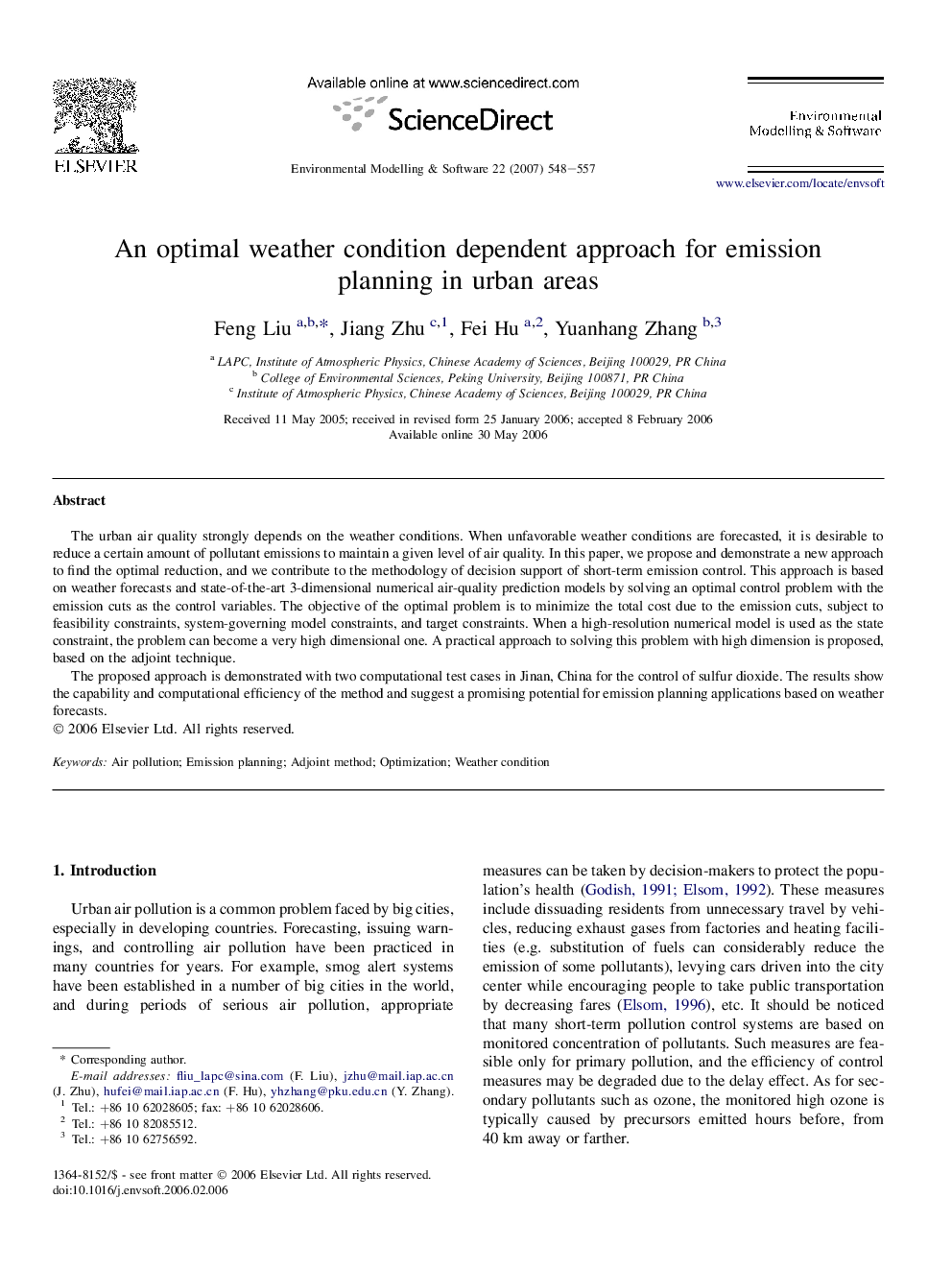| Article ID | Journal | Published Year | Pages | File Type |
|---|---|---|---|---|
| 569145 | Environmental Modelling & Software | 2007 | 10 Pages |
The urban air quality strongly depends on the weather conditions. When unfavorable weather conditions are forecasted, it is desirable to reduce a certain amount of pollutant emissions to maintain a given level of air quality. In this paper, we propose and demonstrate a new approach to find the optimal reduction, and we contribute to the methodology of decision support of short-term emission control. This approach is based on weather forecasts and state-of-the-art 3-dimensional numerical air-quality prediction models by solving an optimal control problem with the emission cuts as the control variables. The objective of the optimal problem is to minimize the total cost due to the emission cuts, subject to feasibility constraints, system-governing model constraints, and target constraints. When a high-resolution numerical model is used as the state constraint, the problem can become a very high dimensional one. A practical approach to solving this problem with high dimension is proposed, based on the adjoint technique.The proposed approach is demonstrated with two computational test cases in Jinan, China for the control of sulfur dioxide. The results show the capability and computational efficiency of the method and suggest a promising potential for emission planning applications based on weather forecasts.
